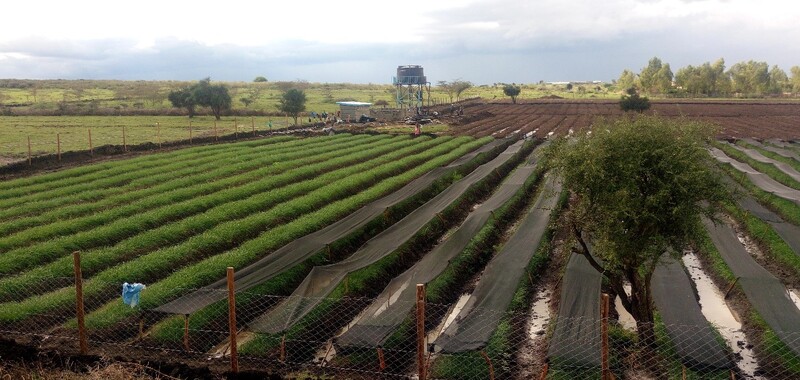
Onion growing has the potential to be a highly profitable venture. Unfortunately, many farmers are yet to realize this. According to a local expert, a farmer who practices good land management can produce 14-17 tonnes of onions from a hectare of land. Depending on prevailing market prices, this translates to handsome financial returns.
This is exactly what the owners of Kitengela Farm were striving towards when they began operations. The company was founded in 2015 and mainly grows bulb onions. It is strategically located in Kitengela (in the outskirts of Nairobi) which is a prime market for fresh vegetables. However, company founder Wilson Gachanja lamented that right from the start, they started contending with soil borne diseases which resulted in significantly lower yields than expected (150 to 200 Kg per 50m bed).
Soil tests confirmed that the soils were infected with Fusarium and nematodes. The company quickly learnt that onions require a determined approach to maximize yield and quality. Effective disease management became a critical next step. They decided to do some research and attended training events hosted by leading agribusiness enterprises. It was during one particularly useful training event at Latia Resource Centre- a knowledge based agricultural training center- that the company came to learn of Koppert and our innovative biological solutions.
A healthy plant starts with a healthy root system
Peter Njaramba is the production manager at Kitengela Farm. On the advice of a regional Koppert consultant, he begun using Trianum in his onion crop. Peter wanted to see if he could boost the productivity of this crop using Trianum. He first applied the 7 days after sowing the seeds in the nursery. This soon resulted in a stronger and more uniform crop in the nursery. Peter was keen to start early in order to give the beneficial fungus in Trianum –Trichoderma harzianum strain T-22, a head start before soil borne diseases such as Fusarium, Pythium and Rhizoctonia could infect his roots. Five days after transplanting, the company drenched Trianum at the rate of 1kg per Acre in each of the blocks transplanted. The onion crop continued to show great vigour.
Production gains
Peter Njaramba is very pleased with the performance of the crop and attributes it to better feeding of the due to the improved root system and lack of stress from soil pathogens. ´´From previous poor yields, we are now able to achieve higher yields of high quality onions. The only thing we have done differently is the application of Trianum.” asserted Mr. Njaramba.´´
The farm is now harvesting an average of 350kg per 50 meter bed compared to the previous average of 150Kg before application of Trianum. With such clear benefits of the product, the farm has made Trianum standard treatment during consecutive seasons of onion cultivation.
As evidenced by the case of Kitengela Farm, growers need reliable methods to grow quality crops and maximize yields on their farms. Indeed one of the best ways to achieve this is by having a healthy plant with good resistance against diseases. This is especially so when plants are young as they tend to be susceptible to soil borne pathogens. Certainly, Trianum has proven its worth and thanks to its unique working mechanism, soil borne diseases stand no chance!